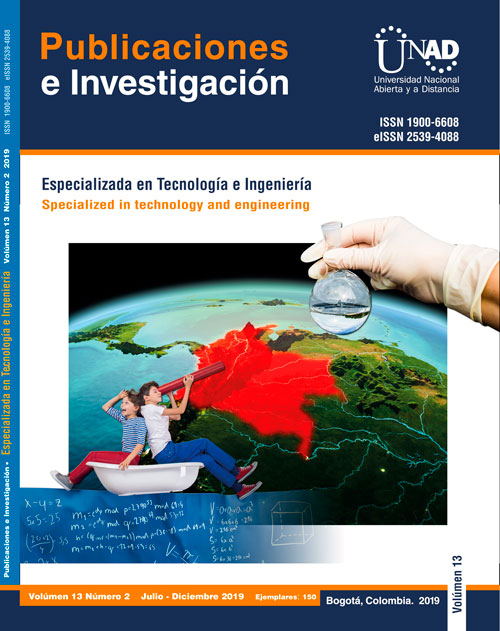When the Publicaciones e Investigaciones Journal receives an original study or article from its author(s), whether by email, postal service, or the platforms available for said purpose, know that it may be published in physical or electronic formats in national or international archives, databases, or SIRES. As such, Publications and Research authorizes the reproduction and citation of said material, provided that the description of information is carried out in conformity with bibliographic norms, and mention the corresponding names, authors, article, issue, and pages. Publications and Research, in advance, expresses that the information, concepts, and methods are the responsibility of the author(s). As such, the UNAD does not have any influence whatsoever over that expressed in the manuscript.
Mathematical dimensioning of hydraulic works for a small hydroelectric power plant in Rio Negro, Cundinamarca through deductive logical methods through obsolete abacus and graphicss
We determine our hybrid system (Ortiz Flórez, 2011) as the dam, spillways, canal, water intakes, pipes, turbines, machine house, generators and among others for our project, which all these are elements that help us fulfill the purpose of this work which is the elaboration of a guide that allows to reduce the uncertainties generated in the pre-feasibility studies of small hydroelectric plants, with an installation range of 1000 to 10,000 kW, the mathematical dimensions such as the real dimensions, quantities of work that is needed for them and prices of each part that builds the system. The production of electricity is vital to maintain our lifestyle and the economic development of the countries. Colombia produces around 70% of its energy through hydroelectric power plants, which during its construction, operation and abandonment stages, different negative cumulative impacts (Vargas Nieto, 2018). In identifying this problem, we chose to propose a methodology to apply the precautionary principle, which has been a fundamental instrument in decision-making that has been progressively consolidated in international environmental law. The pre-feasibility phase of a hydroelectric power plant leads to the annual electric power generation capacity as well as its electrical potential that is possible to install in the Río Negro basin, which has a variety of level levels from the 3,500 masl of the department from Cundinamarca to the 670 meters above sea level of the same department where it is proposed to locate the powerhouse for the plant, that is to say at 2900 meters above sea level, apart from that the catchment level is 3000 meters above sea level. Using a simple methodology that in broad strokes is the identification of major fall in the course of the river in the smallest distance (Ortiz Flórez, 2011) and in turn is developed as a guide which based on in order to make correlations to determine a design flow and with this dimension the hydraulic works previously specified and with them determine a list of prices that help select the best alternative and get unit prices to total together with the quantities of work and thus determine its price and the price of the nstalled kW, for more Clarity of the methodology used below is explained in detail.
When the Publicaciones e Investigaciones Journal receives an original study or article from its author(s), whether by email, postal service, or the platforms available for said purpose, know that it may be published in physical or electronic formats in national or international archives, databases, or SIRES. As such, Publications and Research authorizes the reproduction and citation of said material, provided that the description of information is carried out in conformity with bibliographic norms, and mention the corresponding names, authors, article, issue, and pages. Publications and Research, in advance, expresses that the information, concepts, and methods are the responsibility of the author(s). As such, the UNAD does not have any influence whatsoever over that expressed in the manuscript.








